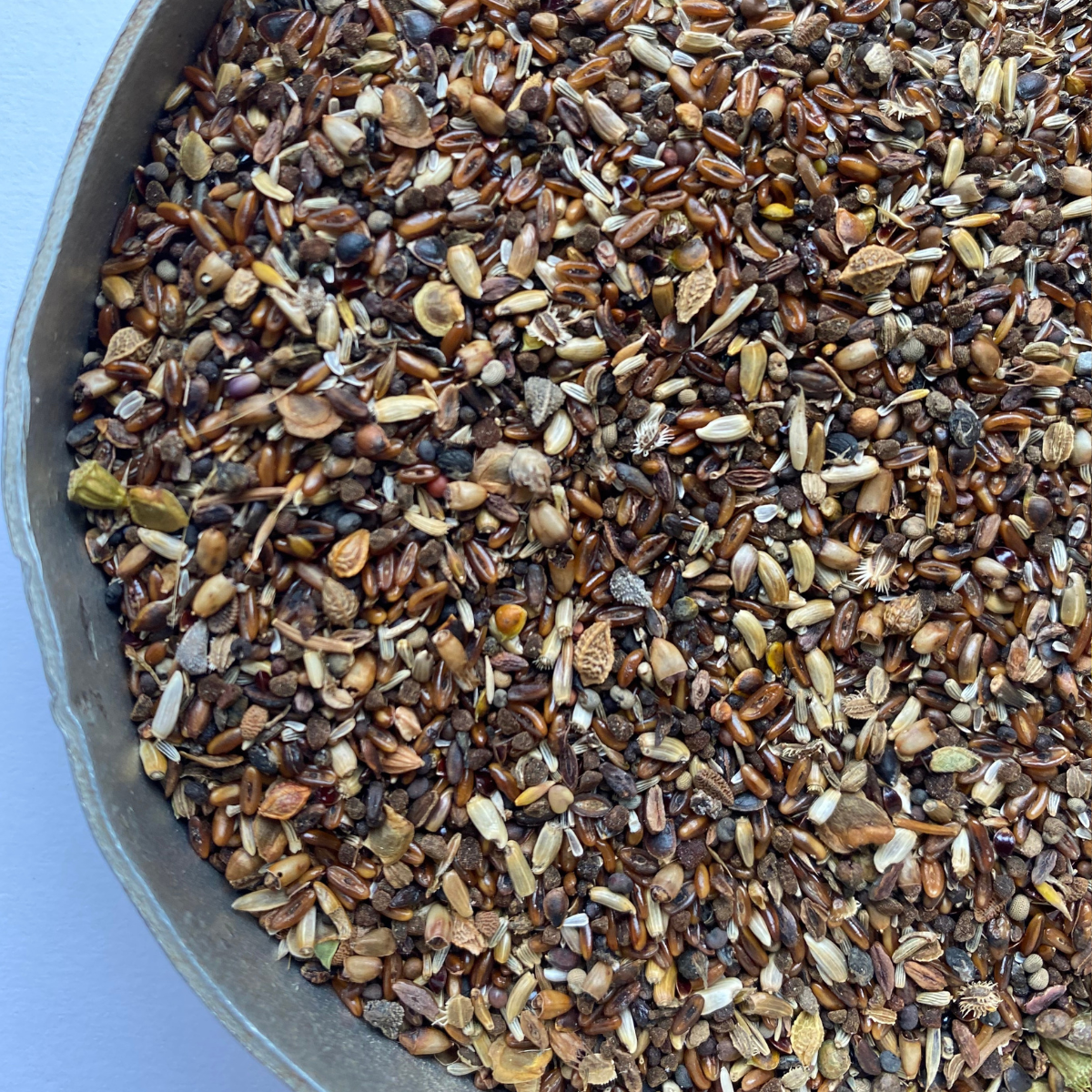Designed to provide food plants and habitats for garden pollinators, this mixture contains wildlife-friendly wildflowers with nectar-rich blooms. Bursting with easy-to-grow wildflowers and British native species such as kidney vetch, oxeye daisy, corn chamomile, field forget-me-not, cornflower, lady’s bedstraw, and tufted vetch, the wildflower seeds in this mixture produce a diverse floral display of bee-friendly flowers which all help to enhance local ecosystems and boost insect populations. Our pollinator wildflower mixture also offers an eco-friendly planting solution for conservation gardening and meadow habitat restoration.
The native species in this pollinator wildflower mix include yarrow, kidney vetch, oxeye daisy, ribwort plantain, common knapweed, greater knapweed, wild carrot, red clover, common toadflax, birdsfoot trefoil, small scabious, lady’s bedstraw, tufted vetch, common St. John’s wort, field scabious, wild marjoram, selfheal, yellow rattle, corncockle, scented mayweed, corn chamomile, field forget-me-not, cornflower, common poppy, corn marigold, opium poppy, wild mustard, night-flowering catchfly, and field pansy.
Contents may change with each new harvest and depending on availability. Suitable for most soil types, do not add compost or fertiliser when sowing.
Can I pair wildflowers with garden perennials? Yes, choose single species such as wild carrot, lady’s bedstraw, and cornflower to add vibrant pops of colour and architectural interest to garden borders whilst providing vital habitat and sources of nectar for pollinating insects.
What is the best way to increase biodiversity in my garden? The best way to support biodiversity in your garden is to look at what wildflowers and plants are growing in existing meadows, hedgerows, and nature reserves nearby and try to replicate what you find. To do this you can look for a native wildflower seed mixture that contains those species, or choose to buy individual wildflower species and blend your own.
Sowing rate: We recommend sowing our native North Downs wildflower mix at a rate of 2 grams per square metre. For more densely populated growth this can be increased to 4 grams per square metre. To encourage even distribution when scattering, wildflower seeds can be mixed with dry sand, sawdust, or flour at a weight ratio of 1:4 (seed to spreader).
When to sow wildflower seeds: Ideally sown in autumn, however for germination in the spring or early summer it can be sown when the ground temperature is above 12 degrees and the conditions are warm and wet. Ensure that the seeds have good soil contact by pressing them lightly into the earth. Do not cover with soil. Take a look at these tips for successful wildflower seed germination.


















Reviews
There are no reviews yet.